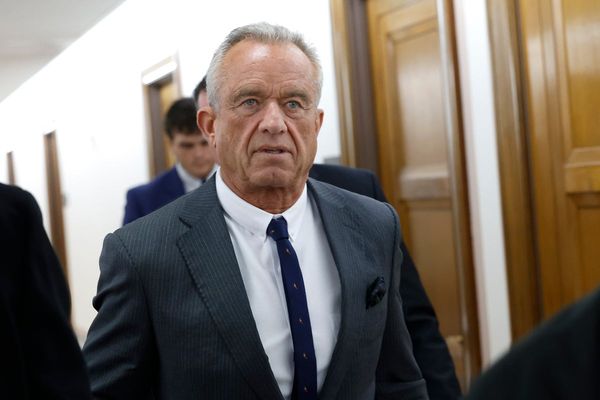The consumer price index rose largely much in line with expectations in April, as energy prices got what now looks like a temporary bump. The core CPI inflation rate, excluding prices for energy and groceries, also showed firm price pressures, but the strength came in goods, not services — the Fed's focus of concern. The S&P 500 moved higher after the CPI report in Wednesday stock market action, but gains were erased by early afternoon.
CPI Inflation Report Hits And Misses
The CPI inflation rate dipped to 4.9%. Economists had expected a steady 5% inflation rate. The consumer price index rose 0.4% on the month, matching forecasts.
The core CPI rose 0.4% vs. March levels, as expected. The annual core inflation rate dipped to 5.5% from 5.6% in March, matching forecasts. The core CPI inflation rate peaked at a 40-year-high 6.6% in September.
Fed Chair Jerome Powell has said that the most important category of spending for the inflation outlook is core nonhousing services, reported with the Commerce Department's late-month personal income and outlays data. Wall Street looks to the CPI gauge of services less rent of shelter as a reasonably close proxy, but it has serious shortcomings.
April's CPI showed services less rent of shelter prices rose 0.4% on the month, down from 0.6% in March. The year-over-year gain slipped to 6.8% from 7.1% in March. However, a 0.1% drop in the cost of medical care services distorted the monthly figure. That reflected a 3.8% monthly drop in the cost of health insurance. But the CPI report's methodology focused on health insurer profits from the previous year doesn't yield a timely, useful data point.
Fed Policy Impact
Ahead of the CPI report, markets were pricing in about 19% odds of a quarter-point Fed rate hike on June 14. That fell to 5% after the CPI data. While low, it suggests that the Fed's signal of a rate-hike pause last week isn't seen as rock-solid. Solid hiring and a drop in the jobless rate in April's jobs report have shifted expectations a bit.
Yet Powell said that five percentage points of rate hikes and ongoing balance-sheet tightening, by unloading Treasuries and mortgage securities bought during the pandemic emergency, gives the Fed "luxury" to wait and see how the data develops.
The Fed sees economic risks skewed to the downside as bank credit tightens and jobless claims trend higher.
CPI Report Details
Core goods prices jumped 0.6% on the month, after rising 0.2% in March and an unchanged reading in February. That raised the 12-month core goods inflation rate to 12% from 1.5%.
Energy prices rose 0.6% on the month but are still down 5.1% from a year ago.
Prices for food at home rose continued to moderate, falling 0.2% after March's 0.3% decline. Prices are still up 7.1% from a year ago.
Food away from home prices rose a more moderate 0.4% from March, following three monthly gains of 0.6%. That left the year-over-year increase at 8.6%.
The CPI report showed used car prices jumping 4.4%, after sliding the prior six months. New vehicle prices dipped 0.2%.
Apparel prices rose 0.3% and are now up 3.6% from a year ago.
Transportation services prices slipped 0.2% after March's 1.4% gain. Prices for shelter decelerated, with April's 0.4% gain following 0.6% and 0.8% rises the prior two months.
S&P 500 Reaction To CPI Report
After the CPI report, futures reversed higher, with the S&P 500 nearly 1% morning trade. But the S&P 500 had reversed to a 0.1% loss around 1 p.m. ET. The S&P 500 slipped 0.5% on Tuesday, but closed just 1.1% below the Feb. 2 level — the peak of the fall-to-spring rally.
The 10-year Treasury yield slipped 7 basis points to 3.45%.
Be sure to read IBD's The Big Picture every day to stay in sync with the market direction and what it means for your trading decisions.
CPI Proxy For Core Nonhousing Services
It is possible to construct an inflation index out of the CPI that bears some relation to the core nonhousing services category highlighted by Powell.
Start with services less rent of shelter. Subtract energy services and health insurance (which is derived from last year's health insurer profits). Then add lodging and food services. In April, the CPI proxy for core nonhousing services saw prices rise a more moderate 0.3%, following several gains of 0.5%-0.6%. On a 3-month annualized basis, the inflation rate eased to 5.7% from 6.6% in March.
This CPI category covers just over 29% of consumer outlays, while PCE core nonhousing services covers about 50% of household spending. In other words, there are still huge differences. Health care is a glaring one, since it accounts for nearly 16% of PCE spending, while medical services amounts to less than 7% of CPI budgets.
The best clue to PCE health services inflation won't come from the CPI but from Thursday's producer price index. The PPI medical services component feeds directly into the PCE.







